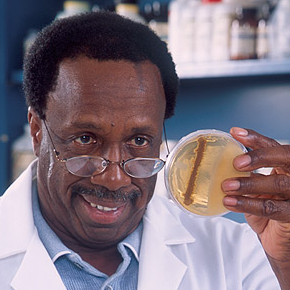Evolutionary/Phylogenetic Studies of Mycotoxin Biosynthetic Pathways 2013
A special issue of Toxins (ISSN 2072-6651). This special issue belongs to the section "Mycotoxins".
Deadline for manuscript submissions: closed (31 January 2013) | Viewed by 65512
Special Issue Editors
Interests: regulation and biosynthesis of mycotoxins; fungal endophyte-grass relationships; bacterial endophytes, and the coevolution of secondary products; primarily mycotoxins, with grasses and other plants, as an adaptive strategy for mutualistic associations
Special Issues, Collections and Topics in MDPI journals
Special Issue Information
Dear Colleagues,
Over five decades ago the turkey X disease demonstrated the devastating effects that consumption of feed contaminated by a fungus and its metabolite can have on poultry. The fungus was identified as Aspergillus flavus and its toxins, the aflatoxins. We now know that the aflatoxins are toxic not only to turkeys but also to other poultry, livestock and humankind. This one mycotoxin served as a world-wide impetus for studies on fungal toxins with the major objective of control and prevention. From this initiative we are now aware of several very toxic fungal metabolites of which most have very wide spectrum of activity on animals and some also affect plants. Since the discovery of aflatoxins, mycotoxicologists have studied the phenomenon of secondary metabolism from fungal physiological, biochemical and plant pathological perspectives, which developed into sophisticated genetic approaches, and now to molecular analysis evolving into our present day series of genomics, proteomics and metabolomic investigations, which in themselves are grouped into the neologism “omics” with the ultimate desire of leading to biological studies at an interactive level. In this issue we have assembled a group of world-class contributors studying the phenomenon of mycotoxin and secondary metabolisms in fungi leading to the accumulation of various toxins in our food and feed supplies while providing some insights into the phylogeny and evolutionary consequences of the synthesis of mycotoxins and their varied pathways. In some studies the evidence is clear for a defensive role and a survival strategy along with clear evolutionary tendencies among producing species. In several instances these studies highlight and or review omics investigations at our current level of understanding as well as their impact on the basic mandate of control of these disastrous metabolites and or their producing organisms.
Dr. Charles W. Bacon
Dr. Scott Gold
Guest Editors
Submission
Manuscripts should be submitted online at www.mdpi.com by registering and logging in to this website. Once you are registered, click here to go to the submission form. Manuscripts can be submitted until the deadline. Papers will be published continuously (as soon as accepted) and will be listed together on the special issue website. Research articles, review articles as well as communications are invited. For planned papers, a title and short abstract (about 100 words) can be sent to the Editorial Office for announcement on this website.
Submitted manuscripts should not have been published previously, nor be under consideration for publication elsewhere (except conference proceedings papers). All manuscripts are refereed through a peer-review process. A guide for authors and other relevant information for submission of manuscripts is available on theInstructions for Authors page. Toxins is an international peer-reviewed Open Access monthly journal published by MDPI.
Please visit the Instructions for Authors page before submitting a manuscript. The Article Processing Charge (APC) for publication in this open access journal is 800 CHF (Swiss Francs). English correction and/or formatting fees of 250 CHF (Swiss Francs) will be charged in certain cases for those articles accepted for publication that require extensive additional formatting and/or English corrections.
Keywords
- aspergillus
- fusarium
- fungal toxins
- fungal secondary metabolites
- fungal endophytes
- metabolomics
- mycotoxins
- omics







